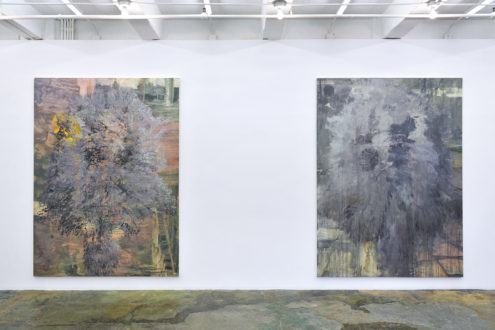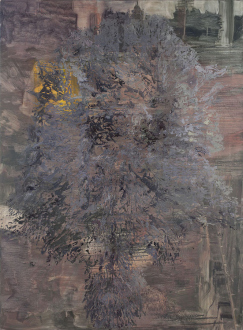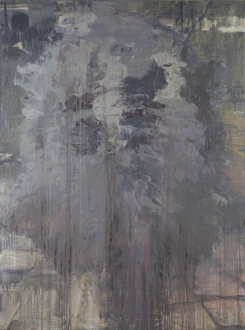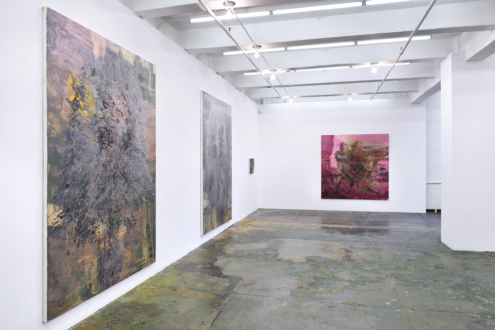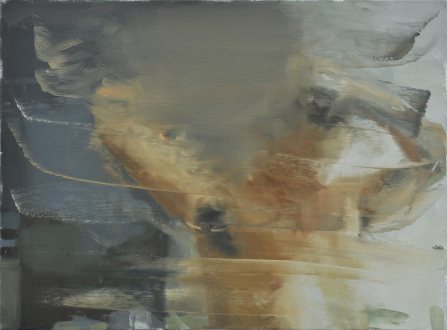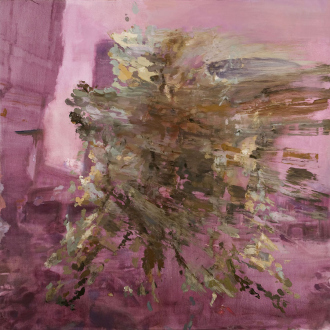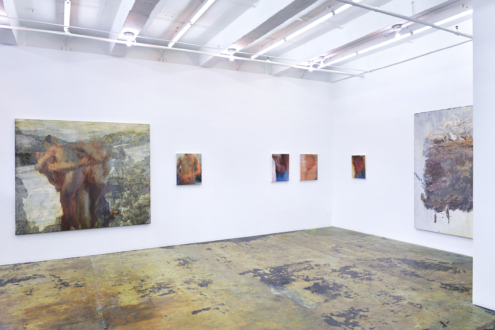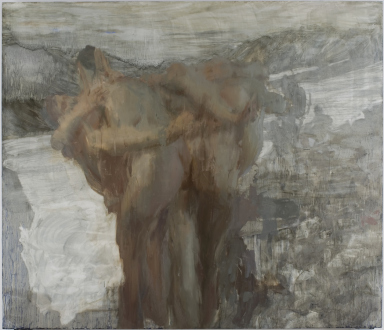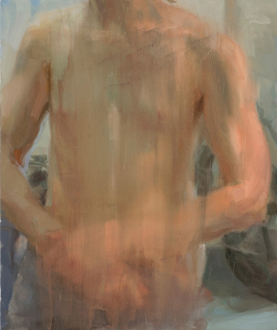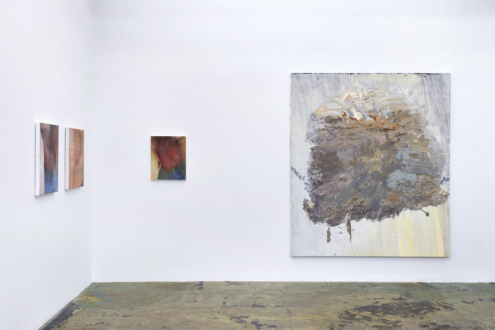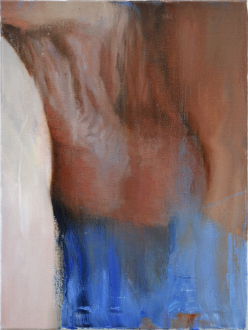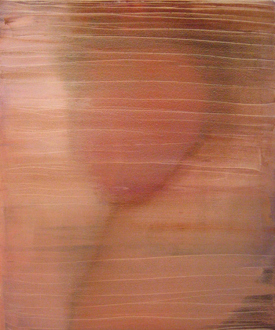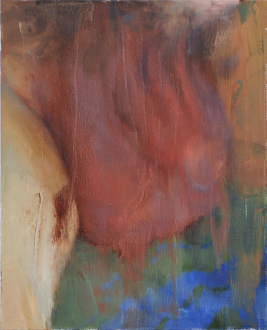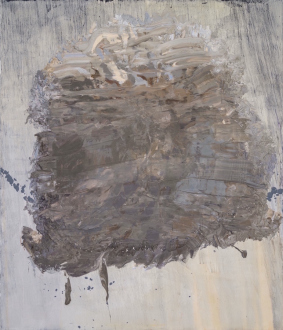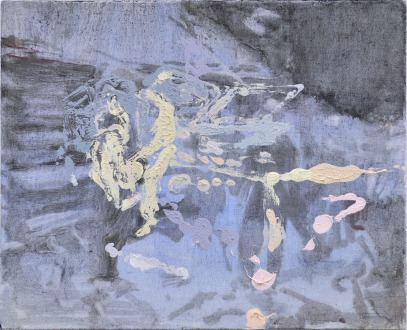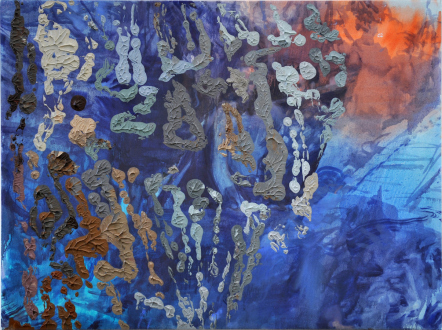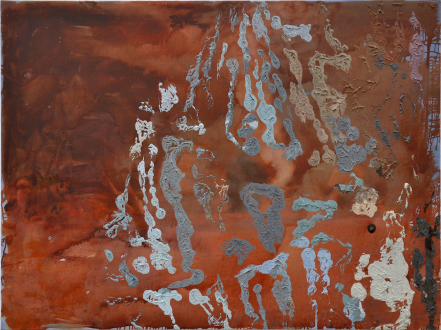Hard Sauce – Hanneline Røgeberg (Works)
Selected Works
Hanneline Røgeberg
Hard Sauce – Hanneline Røgeberg Press Release
Thomas Erben is pleased to present his first solo exhibition with Oslo-born, Brooklyn-based painter Hanneline Røgeberg. In the exhibited paintings, the artist works with traces of local, factual and personal narrative, exceeding these details in works that push against their own structural limits as records, as paintings, and as codes.
The exhibition includes a selection of earlier works that serve to highlight Røgeberg’s engagement with figuration. In Baldwin (2010), the artist paints a figure from the chest up, standing with arms behind its head. The warm tones of the subject’s flesh are scraped back and forth across the surface of the painting, with a haze of non-descriptive brushmarks pushing forward towards the upper center. Balzac VI (2008) exhibits a similar treatment, where the cropped form of a softly modeled torso is squeegeed and loosened in broad swathes. In scraping down these images, Røgeberg brings both material and felt presence to the surface, losing control and gaining intimacy in the same gesture. In Balzac V (2008), the title becomes a pun in a close-up rendering of testicles – a symbol conjured everywhere, but which cannot itself be a metaphor for anything else. The disturbed paint surface resists a distant reading of the image, making this maximally vulnerable object swing back in your face.
These formal distortions reappear in the larger work Thaw (2010). Here, thin washes and scratchy planes of gray paint establish a barren backdrop, against which a grouping of figures stands huddled. They are squeezed together, both in depiction and material, their bodies appearing as a single plume. The contour of their shape evokes the pressed and transferred masses of paint in Røgeberg’s paired works, a similarity that is striking in a painting like 24th of October to 9th of February (2014). Against a field that fades from cool gray to warm beige, a mass of flesh tones is scraped across itself, pulling the eye to the painting’s surface. Echoing the inkblots of a Rorschach test, its instability undermines a fixed reading.
In the most recent works, paired paintings depict places of decisive events that are linked by their shared histories. The two canvases may start with images of the same site in different years, or nearby views within the same time-frame, as is the case in the backgrounds of Zuccotti Park in Bigger half, flat and Bigger half, raised (both 2013). On top of one of these cityscapes, the artist has applied an additional massed form, which she then presses unto the other, transferring a hazy echo of pigment between the works and charging one with the imperative of the other. The obfuscation by these slippery forms enacts distance from the images beneath, partially concealing and filtering them into a possible new interpretation. Røgeberg pulls away from factual specificity, with the opposing images resonating with and against one another.
Throughout Røgeberg’s paintings, visual systems are treated as codes to be used and reused, manipulated, or coopted until their flaws are revealed. By addressing the trauma of history as something that is subject to alteration and concealment, these “unmade history” paintings distrust fixed meanings and highlight their potential for inversion and repetition. They embrace painting with all its inadequacy, whether material or logical, literal or formal, as a means of resisting the unconsidered reproduction of preexisting codes.
